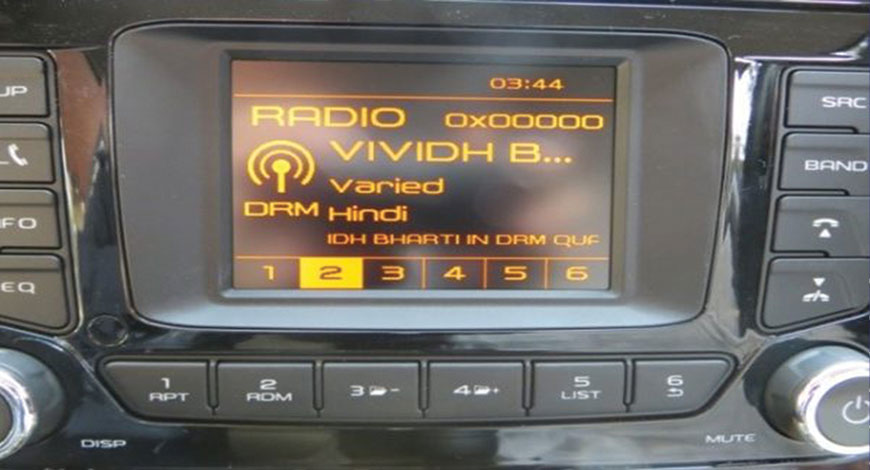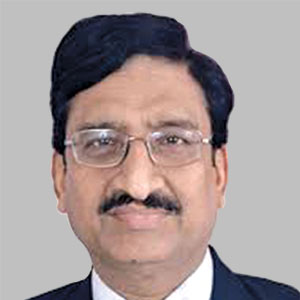Hardware
India Leads The Way With DRM

Digital radio continues its evolution. Whether it is the HD radio, Digital Radio Mondiale (DRM), or DAB standard, each technology has made notable advances in various regions of the world. DRM has made progress in the Asia Pacific region, as well as South Africa, other countries in Africa, the Middle East, and Europe. In the Asia Pacific, India has the biggest roll-out of DRM. It is also moving forward with big successes in the automotive industry. DRM ensures efficient and complete digitization of radio in India, no matter if the services are local or regional, nationwide or even international.
Progress in India
India is currently rolling-out the largest digital radio deployment worldwide, as the public service broadcaster All India Radio (AIR) is upgrading the country’s terrestrial broadcast infrastructure for the future. AIR wanted to improve the quality of its AM coverage. At first, the national broadcaster considered FM for these underserved areas, but FM is also spectrum and energy hungry. So the broadcast standard of choice for this project is DRM, the universal, open digital broadcasting standard for all coverage needs. It can reuse the existing technical infrastructure, towers, and feeder lines and analog and digital can both be broadcast on the same transmitters for as long as is needed for the population to get digital radio receivers. So analog switch-off is not required, listeners who depend on AM can still hear it for a long time to come.
The transition from legacy analog broadcasts to digital radio for the nationwide radio network in the former AM bands is seamless, as AIR is updating the existing transmitter infrastructure while offering analog-digital simulcast services at the same time. By now, the most recent addition to the AAC codec family is on the air in India: already, the first five major transmitter locations in India, two at Delhi, and one each at Bangalore, Pune, and Chennai have been upgraded with xHE-AAC-enabled DRM equipment by RFmondial with Fraunhofer technology components inside. In total, there are 39 transmitter locations (including 35 transmitters that form the domestic medium-wave network), which all are expected to receive this latest upgrade moving forward.
Besides enabling more and higher-quality audio services per DRM transmission, the new xHE-AAC codec also allows broadcasters to benefit from a simplified broadcast head-end configuration, as all audio parameters are automatically streamlined internally by the xHE-AAC encoder. And the encoder is equally optimized for speech and music content, which eliminates the need to change configuration settings depending on the current type of audio content being broadcast. xHE-AAC makes it possible to provide much better, FM-like audio quality, as well as more programs in a single DRM transmission, up to three instead of one. The upgraded DRM encoder equipment also supports the provision of detailed textual information like current news, information, program schedules, traffic updates, and contact information via DRM’s Journaline advanced text service. Eventually, based on DRM’s emergency warning functionality (EWF) – AIR’s DRM transmission network will be tightly integrated into the national infrastructure for disaster management and alert dissemination, which is currently being established based on the international Common Alerting Protocol (CAP) standard. As for standalone DRM receivers, Fraunhofer IIS is working closely with domestic and international manufacturers to bring new receiver models to the Indian market, offering full advanced DRM functionality at a competitive price point.
xHE-AAC will align digital radio with the world of modern consumer devices and support for xHE-AAC audio decoding will be a default feature of the Android platform from version 9 (Pie) onwards. The use of xHE-AAC in DRM and the codec’s suitability for adaptive web streaming to mobile phones enable Indian broadcasters to bring the two worlds of radio and streaming together. The integrated broadcast solution offers a seamless user experience and reaches listeners on all classes of devices, from standalone radios to cars and mobile phones. In addition, more and more receiver models will combine the two distribution paths on a single device, no matter if it is a mobile phone with built-in digital radio reception, a car with a multi-mode receiver solution or a standalone desktop radio with built-in Wi-Fi streaming.
Car and receiver manufacturers’ commitment to DRM
The automotive industry has also supported the introduction of DRM. Hyundai, Maruti Suzuki, and Mahindra car makers have all begun fitting DRM receivers into their new cars. There are already 1.5 million cars with DRM receivers over the past two years. Different from most countries with digital radio services being rolled-out, all those radio sets come with DRM as a default functionality, without extra cost to the consumer. Most leading car brands have either already incorporated DRM into their vehicles, or are in the process of doing so. There are also many standalone receivers and demand is building for the stereo receivers which have data screens available, as well as AM and FM reception.
DRM receivers celebrated at BES Expo 2019
At the recently held BES Expo, the DRM Consortium and some of its Indian and international members and partners presented the latest update on India and demonstrated DRM receiver models and solutions. After several presentations of receivers, the price of the original Indian receiver has been slashed by 50 percent. DG and EinC AIR witnessed the reception of DRM digital transmission in FM band on mobile phones.
Way forward
India’s digitization plan began in 2007 and has progressed since then. There are now 35 MW and SW high powered transmitters that are digital. Half the country is covered by digital radio now. With the digitized medium- and short-wave transmissions for nationwide and international service coverage up and running, the next step is to digitize the local radio services in the FM band. The Telecom Regulatory Authority of India (TRAI) issued a recommendation in 2018 based on feedback from all stakeholders in India, including the private FM broadcast industry. A roadmap announcement by the Indian government is expected. DRM is already showing its superiority, as its features and benefits overtake anything the analog mode can provide, as the DRM AIR rollout makes India potentially the largest digital radio market in the world. Using the full DRM standard in both AM and FM is the only way to make it attractive to Indian listeners, to the whole country engaged on the digital path.
 Yogendra Pal
Yogendra Pal
Honorary Chairman-India Chapter, DRM Consortium
“As demonstrated at BES Expo 2019, a lot has been achieved in India recently by AIR, experts, the industry, and the DRM Consortium. AIR has the opportunity now to explore the full potential of DRM digital broadcasts so that radio listeners see the benefits of acquiring and using digital radio desktop receivers and line-fit DRM radios in cars. Work is also being done to find the best solution for fitting DRM into mobile handsets, ensuring at the same time that radio remains indeed free to air on such devices. India is now in a leading position worldwide as it is rolling-out digital radio nationally using the DRM standard. This offers great cooperation and product export opportunities into countries all over the APAC and beyond. After the development of the DRM standard, a large number of countries have started the process of adopting and/or rolling-out DRM for national coverage in MW, as well as VHF bands. A huge portion of the world’s population is already covered by DRM transmissions on international shortwave. The Indian electronics industry sees this as a great opportunity to meet the domestic demand and also for exports and fulfill the Make in India mission of the honorable prime minister.”








You must be logged in to post a comment Login